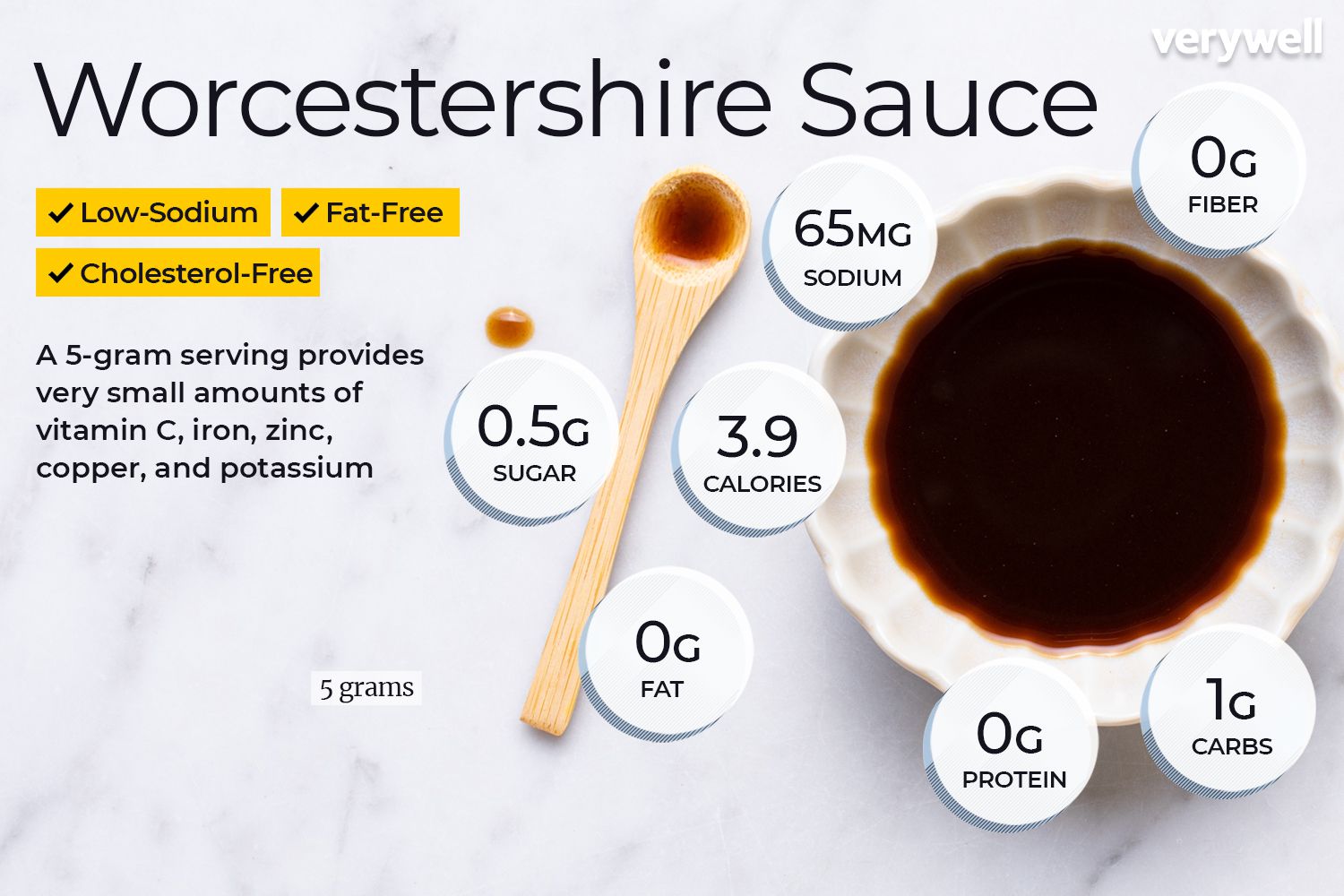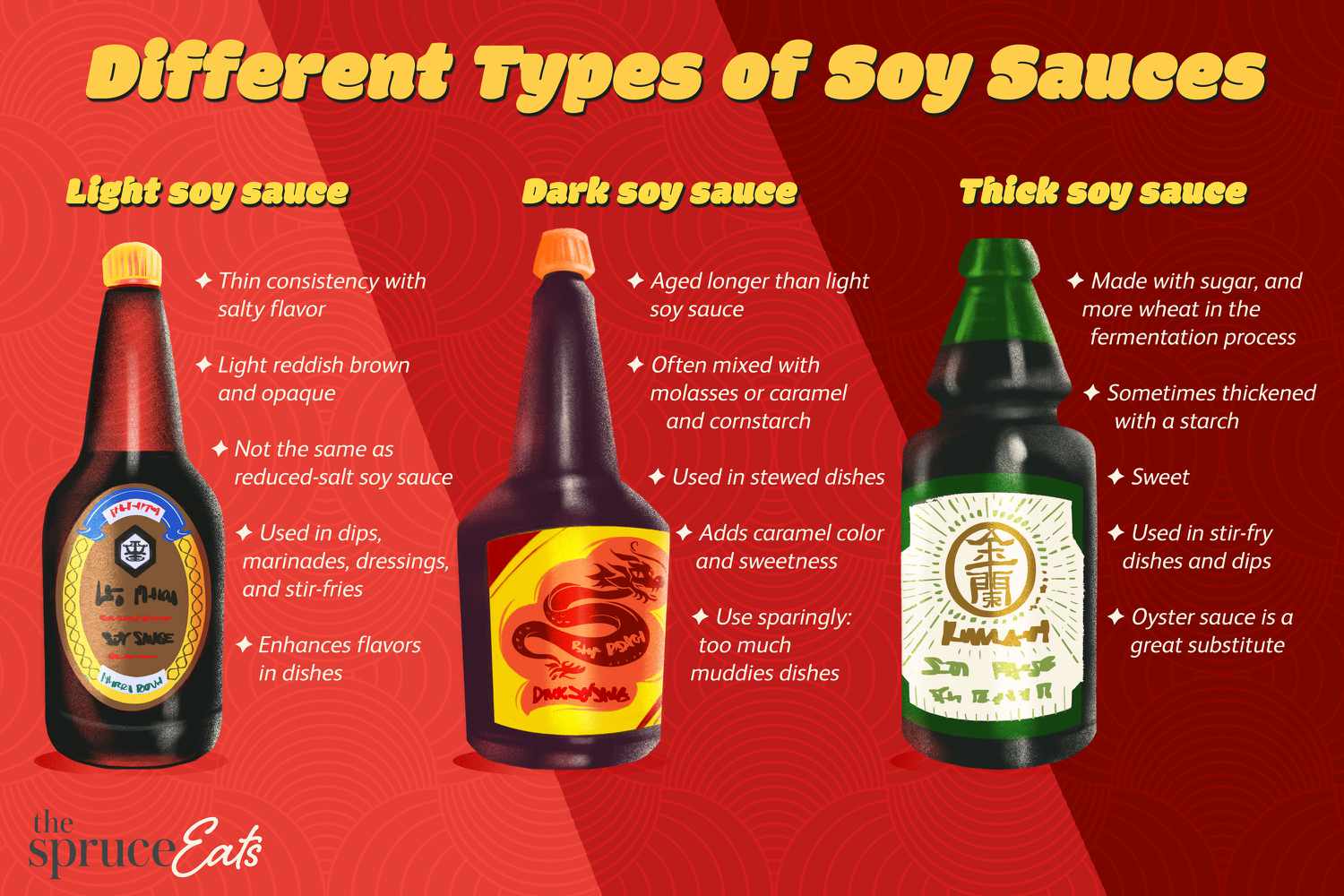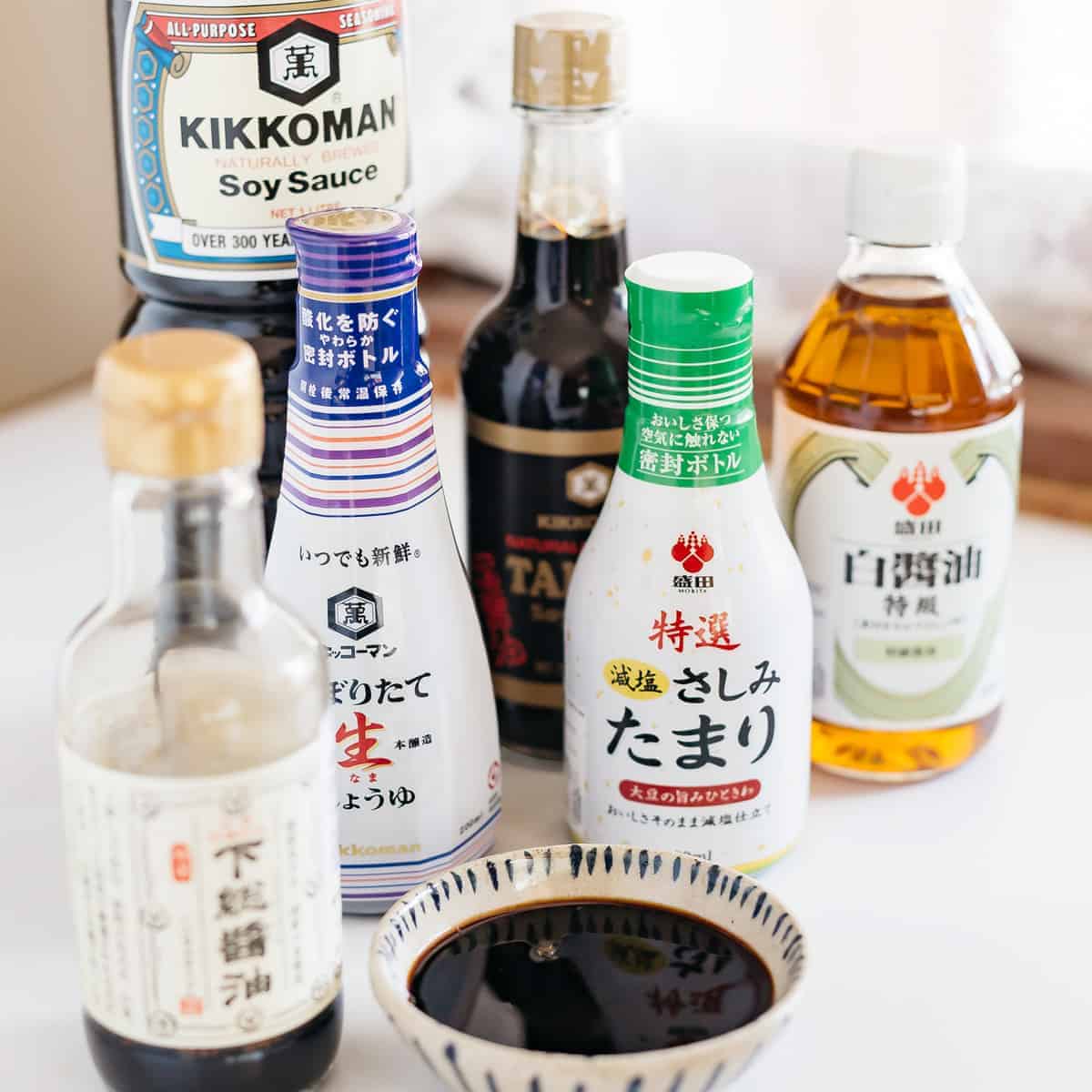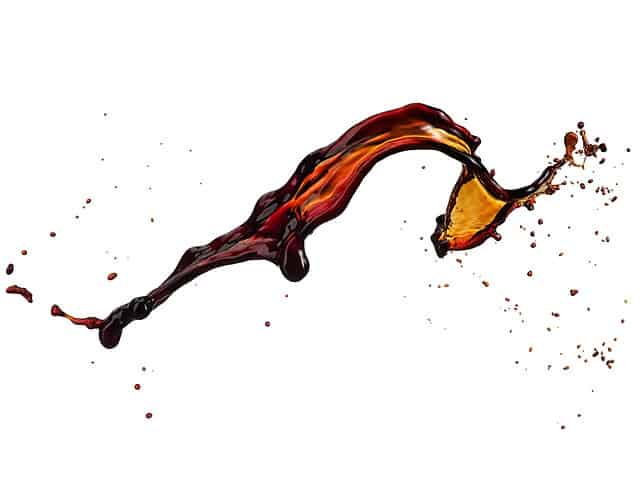Overview

Soy sauce and Worcestershire sauce are both dark condiments that add distinct flavors to a variety of dishes. While soy sauce is known for its salty and umami taste, Worcestershire sauce offers a complex combination of tangy, sweet, savory, and sour flavors. These sauces have different origins and ingredients, making them unique in their own way. In this article, we will delve into the taste profiles, nutritional content, culinary applications, production methods, and key differences between soy sauce and Worcestershire sauce, helping you understand how each condiment can enhance your culinary endeavors.
Soy Sauce: Origin, Ingredients, And Usage
Soy sauce, a staple condiment in Asian cuisine, originated in China over 2,500 years ago. It is made by fermenting soybeans with salt and the fungus Aspergillus oryzae. Additional ingredients may include wheat, water, and sometimes other grains. The fermentation process enhances the sauce’s complex, umami flavor. Soy sauce is incredibly versatile and is used in various dishes, such as stir-fries, marinades, soups, and dipping sauces. It adds depth and saltiness to dishes, enhancing the overall taste. Its rich flavor and dark color make it an essential ingredient in many Asian recipes.
Worcestershire Sauce: History, Ingredients, And Culinary Applications
Worcestershire sauce has a rich history that dates back to the early 19th century in Worcester, England. The exact recipe for Worcestershire sauce is a closely guarded secret, but it typically contains ingredients such as vinegar, molasses, anchovies, tamarind, garlic, onions, and various spices. This unique combination of flavors gives Worcestershire sauce its signature tangy and savory taste. It is commonly used in British and American cuisines as a flavor enhancer in marinades, dressings, and meat-based recipes. Worcestershire sauce adds depth and complexity to dishes, making it a versatile and widely loved condiment.
Taste Profile

Soy sauce and Worcestershire sauce have distinct taste profiles that set them apart. Soy sauce offers a salty and umami flavor with hints of sweetness. Its rich and robust taste complements a wide range of dishes, making it a staple in Asian cuisines. On the other hand, Worcestershire sauce has a unique balance of tangy, sweet, savory, and sour flavors. This combination creates a deep and complex taste that adds depth to marinades, dressings, and meat-based recipes. Both sauces bring a delicious flavor to the table, but their distinct taste profiles make them suitable for different culinary applications.
Soy Sauce Flavors And Varieties
Soy sauce comes in a variety of flavors and styles, each with its own unique characteristics. The most common types include light soy sauce, which has a milder and sweeter taste, and dark soy sauce, which is thicker with a stronger umami flavor. There is also tamari soy sauce, which is gluten-free and has a rich and full-bodied taste. Other varieties include low-sodium soy sauce, sweet soy sauce, and mushroom soy sauce, which add a distinct flavor profile to dishes. With such a wide range of flavors to choose from, soy sauce can enhance the taste of any dish.
Worcestershire Sauce Savory And Tangy Taste
Worcestershire sauce is renowned for its savory and tangy flavor, making it a versatile condiment in various cuisines. The sauce offers a rich umami taste combined with a hint of sweetness and a tangy kick. Its unique blend of ingredients, including vinegar, molasses, tamarind, and anchovies, contributes to its robust and complex flavor profile. Worcestershire sauce adds depth and complexity to dishes, whether used as a marinade, seasoning, or table condiment. Its bold and tangy taste complements meats, vegetables, salads, and even cocktails, making it a go-to condiment for flavor enhancement.
Nutritional Comparison

Both soy sauce and Worcestershire sauce offer distinct nutritional profiles. In terms of potassium content, both condiments provide a significant amount. However, it is important to note that both sauces are also high in sodium. Both soy sauce and Worcestershire sauce are low in calories and fat. As with any condiment, moderation is key due to their sodium content. While soy sauce contains soybeans and may offer some health benefits, Worcestershire sauce includes tamarind and anchovies, which contribute to its unique taste but may not provide the same nutritional benefits as soy sauce.
Soy Sauce: Nutritional Content And Health Benefits
Soy sauce offers more than just a delicious flavor. It also provides some nutritional benefits. While it is low in calories and fat, it is important to note that soy sauce is high in sodium. On the upside, soy sauce contains soybeans, which are a good source of protein. It also contains iron and small amounts of vitamins and minerals. Additionally, soy sauce contains compounds called phytochemicals, which are believed to have antioxidant and anti-inflammatory properties. However, moderation is key due to its high sodium content.
Worcestershire Sauce: Nutrient Profile And Sodium Content
Worcestershire sauce provides a unique blend of flavors, but it’s important to be aware of its nutrient profile. While not a significant source of vitamins or minerals, Worcestershire sauce does contain small amounts of calcium, iron, and vitamin C. However, it is important to note that Worcestershire sauce is high in sodium, which can contribute to increased blood pressure and health issues. Just one tablespoon of Worcestershire sauce can contain around 65% of the recommended daily sodium intake. Therefore, moderation is key when using Worcestershire sauce as a condiment.
Culinary Uses

Soy Sauce: Renowned for its versatility, soy sauce is used in a wide array of dishes. It serves as a savory seasoning and marinade for meats, seafood, and vegetables. Soy sauce is also commonly used as a dipping sauce for sushi, dumplings, and other Asian delicacies. Additionally, it adds depth of flavor to stir-fries, fried rice, noodle dishes, and soups.
Worcestershire Sauce: With its robust and tangy taste, Worcestershire sauce has a range of culinary applications. It is commonly used as a flavor enhancer for meats, such as steaks and burgers, adding a rich, savory note. Worcestershire sauce also adds complexity to marinades, dressings, and gravies. It can be incorporated into dishes like stews, casseroles, and roasted vegetables, providing a distinctive flavor profile.
Soy Sauce: Versatile Cooking Applications
Soy sauce is renowned for its versatility and is used in a wide array of dishes. It serves as a savory seasoning and marinade for meats, seafood, and vegetables, adding depth and umami flavor. Soy sauce is commonly used as a dipping sauce for sushi, dumplings, and other Asian delicacies. Additionally, it adds richness and complexity to stir-fries, fried rice, noodle dishes, and soups. Its bold and distinct flavor profile complements a variety of ingredients, making it an essential ingredient in many culinary traditions across the world.
Worcestershire Sauce: Traditional And Modern Culinary Uses
Worcestershire sauce has a long history and is widely used in traditional and modern culinary practices. Its tangy and savory flavor adds depth and complexity to a variety of dishes. Some traditional uses of Worcestershire sauce include marinating meats, seasoning stews and soups, and adding richness to gravies and sauces. In modern cuisine, it is often used as a condiment for burgers, steaks, and roasted vegetables. It can also be added to cocktails and marinades for an extra kick of flavor. Worcestershire sauce’s versatility makes it a beloved ingredient in both classic and contemporary recipes.
Differences In Production

When it comes to production, there are notable differences between soy sauce and Worcestershire sauce. Soy sauce is made through a fermentation process that involves soybeans, wheat, and salt. The mixture is left to ferment for months, allowing the natural enzymes to break down the ingredients and develop its rich umami flavor. On the other hand, Worcestershire sauce is created by mixing vinegar, molasses, anchovies, tamarind extract, and various seasonings. This mixture is then aged for several months to allow the flavors to meld together and create the distinctive Worcestershire sauce taste.
Soy Sauce: Fermentation Process And Brewing Methods
Soy sauce is produced through a meticulous fermentation process and brewing methods. The first step involves mixing soybeans and wheat, which are then steamed to soften them. After that, the mixture is inoculated with a starter culture of beneficial mold and yeast spores, such as Aspergillus oryzae. This mixture is then left to ferment for several months, allowing the natural enzymes to break down the ingredients and develop the rich umami flavor. After fermentation, the liquid is pressed and strained to obtain the soy sauce, which is then pasteurized and aged to further enhance its flavor.
Worcestershire Sauce: Ingredients Mixing And Aging Process
Worcestershire sauce is made by combining a mixture of ingredients like vinegar, molasses, anchovies, onions, garlic, tamarind extract, chili pepper extract, and sugar. These ingredients are carefully mixed together to create a flavorful base. After the mixing process, the sauce is aged for a period of time to allow the flavors to develop and mature. The aging process helps enhance the complexity of the sauce and adds richness to its taste. This combination of mixing and aging gives Worcestershire sauce its unique and distinct flavor profile.
Conclusion

In conclusion, soy sauce and Worcestershire sauce are both flavorful condiments that offer unique qualities to enhance dishes.
Soy sauce, with its rich umami flavor and versatile uses, is a staple in Asian cuisine. It adds depth and complexity to stir-fries, marinades, and dipping sauces.
On the other hand, Worcestershire sauce brings a savory and tangy taste to various dishes, especially in Western cooking. Its blend of ingredients and aging process contribute to its distinct flavor profile.
While both sauces have their own strengths and culinary applications, they can be enjoyed separately or combined to create innovative flavor combinations. Explore the diverse possibilities and let your taste buds be the judge!
Key Variations Between Soy Sauce And Worcestershire Sauce
Soy sauce and Worcestershire sauce have several key variations that set them apart. Here are some of the main differences:
- Flavor Profile: Soy sauce is known for its rich umami flavor and salty taste, while Worcestershire sauce offers a savory and tangy flavor with a hint of sweetness.
- Ingredient Differences: Soy sauce is made primarily from fermented soybeans, wheat, water, and salt. Worcestershire sauce, on the other hand, is made from a blend of vinegar, molasses, anchovies, tamarind, and various spices.
- Culinary Uses: Soy sauce is commonly used in Asian cuisine for stir-fries, marinades, and dipping sauces. Worcestershire sauce is more commonly used in Western cooking for flavoring meats, soups, and gravies.
- Production Process: Soy sauce undergoes a fermentation process that can take months or even years, while Worcestershire sauce is created through a mixing and aging process that typically lasts a few weeks.
- Nutritional Content: Soy sauce contains higher levels of protein and potassium, while Worcestershire sauce is higher in sodium and sugar.
- Regional Origins: Soy sauce originated from China and is a staple in Asian cooking, while Worcestershire sauce has English origins and is widely used in Western cuisine.
Overall, these variations make soy sauce and Worcestershire sauce unique in their own ways, offering distinct flavors and culinary applications.
Recommendations For Optimal Flavor Pairing
When it comes to pairing soy sauce and Worcestershire sauce with other ingredients, there are a few recommendations to keep in mind. For soy sauce, it pairs well with ingredients like garlic, ginger, sesame oil, and vinegar, adding depth and umami to dishes. It is commonly used in stir-fries, marinades, and dipping sauces. On the other hand, Worcestershire sauce complements beef, mushrooms, onions, and tomato-based dishes. It adds a tangy and savory flavor to recipes like burgers, steaks, and meat-based gravies. Experimenting with these flavor combinations can elevate your dishes to new levels of deliciousness.
FAQ About Soy Sauce Vs Worcestershire Sauce: Contrasting Condiments
Q: What is the main difference between soy sauce and Worcestershire sauce?
A: The main difference lies in their ingredients and flavor profiles. Soy sauce is made from fermented soybeans while Worcestershire sauce is made from a blend of vinegar, molasses, anchovies, and other spices, giving it a tangy and savory flavor.
Q: Can soy sauce be used as a substitute for Worcestershire sauce and vice versa?
A: While they both add umami and depth to dishes, they have distinct flavors. Soy sauce works well in Asian dishes, while Worcestershire sauce is more commonly used in Western recipes. Substitution may alter the overall taste of the dish.
Q: Are there any similarities between soy sauce and Worcestershire sauce?
A: Both sauces are commonly used as condiments to enhance the flavor of dishes. They also contain umami, the fifth basic taste, which adds richness and complexity to food.
Q: Which sauce is more versatile in cooking – soy sauce or Worcestershire sauce?
A: Soy sauce is more versatile in Asian cuisine, used in marinades, stir-fries, and as a dipping sauce. Worcestershire sauce, on the other hand, is versatile in Western dishes like marinades, sauces, and salad dressings.
Q: Are there any health differences between soy sauce and Worcestershire sauce?
A: Soy sauce tends to be lower in calories and containing less sugar compared to Worcestershire sauce. However, both should be consumed in moderation due to their high sodium content.

We are introducing OH! NANA, where culinary excellence meets sustainability! Our journey began with a passion for creating delicious, nutrient-dense dishes while minimizing waste and environmental impact. At OH! NANA, we believe that great taste and nutritional value can go hand in hand with responsible sourcing and production. Our commitment to delivering intense flavors and high nutritional value is paired with a dedication to reducing waste in every aspect of our operations. From sourcing fresh, locally-grown ingredients to implementing efficient kitchen practices, we strive to positively impact both your health and the health of our planet.